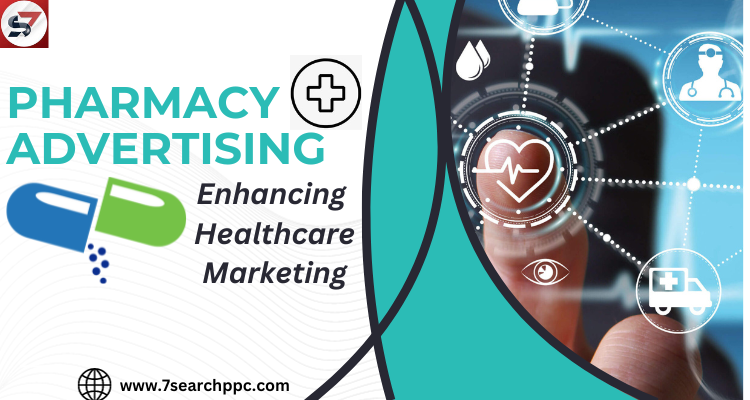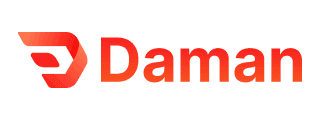 Real Blogger Outreach – Powerful Links. Zero Spam.
Real Blogger Outreach – Powerful Links. Zero Spam.
Empowering Healthcare Through Patient Engagement Software: A Roadmap to Better Outcomes
Written by Stephan Hawke » Updated on: June 17th, 2025 171 views

Empowering Healthcare Through Patient Engagement Software: A Roadmap to Better Outcomes
The healthcare landscape has been undergoing a seismic shift, driven by a multitude of factors—from technological innovation and changing patient expectations to new care models and policy reforms. One of the pivotal elements in modern healthcare strategy is the concept of patient engagement, where patients become active contributors in their care instead of passive recipients. Fostering this level of involvement necessitates robust digital tools, the cornerstone of which is patient engagement software.
By bridging communication gaps, simplifying administrative tasks, and personalizing care, such software is revolutionizing how healthcare providers and patients interact. Below, we explore the critical role of patient engagement software in elevating clinical outcomes, discuss its key features, and highlight how custom healthcare software development services can help organizations tailor solutions to their unique needs.
Why Patient Engagement Matters in Today’s Healthcare
Decades ago, patient interactions with healthcare providers were largely confined to face-to-face appointments. Post-visit instructions and medication guidelines were often handed out in paper form, leaving patients with limited avenues for follow-up questions. In this old model, patients were often seen as bystanders, with little control over their treatment path.
The paradigm has since evolved. With rising patient expectations for digital convenience—akin to what they experience in other aspects of their lives—engagement has become a significant metric of success. Engaged patients typically:
- Adhere Better to Treatment Plans: When patients understand and actively participate in their care, they are more likely to follow prescribed therapies.
- Experience Fewer Complications: Studies suggest that active patients who track symptoms, maintain follow-up appointments, and ask pertinent questions often detect complications earlier.
- Report Higher Satisfaction: A positive experience not only boosts patient loyalty but also helps medical practices and hospitals maintain a sterling reputation.
Given these benefits, it’s no wonder that healthcare providers, payers, and technology companies are all investing in cutting-edge patient engagement software to facilitate meaningful and efficient patient-provider interactions.
Core Features and Benefits of Patient Engagement Software
1. Secure Messaging and Communication
A central feature of patient engagement platforms is two-way, secure messaging. This allows patients to ask quick follow-up questions, share symptom updates, or clarify medication instructions. Meanwhile, medical professionals can respond promptly, preventing minor health concerns from escalating into emergencies.
Benefit: Real-time communication reduces the frequency of in-person visits, saving time for both patients and providers. It also enhances patient confidence, knowing they can reach out if they have any concerns.
2. Appointment Scheduling and Reminders
Manually booking appointments and relying on paper-based reminders can be tedious and error-prone. An integrated software platform streamlines the scheduling process, enabling patients to book, reschedule, or cancel appointments online. Automated reminders—via email, text, or even mobile push notifications—ensure that patients don’t miss critical check-ups.
Benefit: Practices and clinics can reduce administrative overhead, minimize no-shows, and ensure a more evenly distributed flow of patients throughout the day.
3. Personalized Patient Portals
A robust patient engagement system typically includes a portal where individuals can access electronic health records (EHR), lab test results, and personalized educational materials. Having a centralized dashboard helps patients stay informed about their condition and treatment history.
Benefit: Empowered with easy access to their own medical data, patients are more likely to remain engaged, comply with treatment plans, and spot discrepancies.
4. Educational Content and Coaching
Whether through videos, infographics, or articles, offering relevant educational materials can guide patients in managing chronic conditions (like diabetes or hypertension) or preparing for procedures (like a colonoscopy). This approach transforms the care journey into a learning experience, amplifying patient understanding and motivation.
Benefit: Improved patient literacy leads to fewer misunderstandings and better adherence to care instructions, ultimately improving health outcomes.
5. Remote Monitoring and Telehealth Integrations
As telemedicine and virtual care continue to expand, incorporating telehealth features within patient engagement software is becoming a must. Remote patient monitoring, which uses wearable devices to track metrics like heart rate or blood glucose levels, integrates seamlessly into these platforms.
Benefit: Chronic disease patients can receive ongoing care at home, reducing hospital readmissions. Meanwhile, providers can monitor real-time data to intervene proactively.
6. Outcome Tracking and Feedback
Successful patient engagement software doesn’t just stop at communication—it tracks outcomes and collects feedback. This could involve questionnaires that gauge how patients feel post-treatment, or it might capture data on blood sugar levels in diabetic patients over time.
Benefit: Outcome-based tracking offers actionable insights, enabling providers to refine treatment plans and identify which interventions yield the best results.
The Role of Custom Healthcare Software Development Services
While off-the-shelf patient engagement solutions offer a broad range of features, many healthcare organizations have unique requirements—be it integrating with a legacy EHR system, adhering to specialized workflows, or offering multilingual patient support. This is where custom healthcare software development services become invaluable. By collaborating with an experienced development partner, healthcare providers can:
- Tailor Workflows: Each practice might have its distinct booking, billing, and follow-up protocols. Custom solutions ensure that the software aligns perfectly with these workflows, minimizing staff re-training.
- Address Compliance and Security: HIPAA (in the U.S.), GDPR (in the EU), and other regulations around the globe mandate strict rules for data security. A custom-built system can incorporate advanced encryption, role-based access, and other security features right from the design phase.
- Integrate with Existing Systems: Rather than forcing clinicians to switch between multiple platforms, a custom integration can merge patient engagement features with EHRs, billing systems, and more. This unified ecosystem boosts efficiency and user satisfaction.
- Scalability: As a practice grows—adding locations, expanding service lines, or increasing the patient base—it needs a platform that can scale accordingly. Custom-built software can accommodate such growth, ensuring uninterrupted service.
- Future-Ready Innovations: Emerging technologies like AI-driven analytics, voice assistants, and even virtual reality therapy can be woven into a custom solution, keeping the healthcare organization on the cutting edge.
Overcoming Common Barriers to Patient Engagement
Despite the obvious benefits of patient engagement software, healthcare providers often encounter challenges during deployment and usage:
- Resistance to Change: Medical staff might be reluctant to adopt new systems that disrupt familiar workflows. Overcoming this barrier requires comprehensive training and clear communication about the software’s benefits.
- Data Privacy Concerns: Given the sensitivity of health data, patients may worry about their information’s security. Building trust through transparent privacy policies and robust data protection measures is vital.
- Digital Literacy Gaps: Not all patients are tech-savvy. Ensuring the platform is intuitive and providing tutorial materials (e.g., quick-start guides, short videos) can help bridge this gap.
- Interoperability Issues: Older clinics may rely on legacy systems that don’t easily integrate with modern software. Custom development can resolve interoperability challenges by creating specialized connectors or APIs.
Best Practices for Successful Implementation
- Start Small: Pilot the software within one department before rolling it out across the entire organization. This approach allows for early identification and resolution of issues.
- Involve Clinicians from Day One: Doctors, nurses, and administrative staff who will use the system regularly should have a say in feature requirements and workflows. Their buy-in is essential for smooth adoption.
- Emphasize User Experience: Intuitive UI/UX design is critical. If the platform is cumbersome or unintuitive, both patients and staff will be less likely to engage.
- Ongoing Support and Upgrades: Technology evolves quickly. Choose a solution or partner for custom healthcare software development services that offers ongoing updates, maintenance, and support.
- Monitor Key Metrics: Track engagement rates, appointment attendance, patient satisfaction scores, and clinical outcomes. Data-driven insights can guide refinements to optimize effectiveness.
Real-World Impact: Success Stories
- Multi-Site Hospital Network: By implementing patient engagement software that integrated with their EHR, a large hospital reduced readmission rates for chronic heart failure patients by 20%. Automated reminders and remote monitoring caught early warning signs, enabling timely intervention.
- Private Dental Clinic: A regional dental group leveraged a custom platform to handle appointment scheduling, post-visit follow-ups, and patient education. Within six months, they saw a 15% boost in patient retention, attributing the improvement to more consistent communication and better-prepared patients.
- Specialty Practice: An oncology clinic rolled out secure messaging and telehealth options, particularly beneficial for immunocompromised patients. The reduced need for in-clinic visits during treatment cycles significantly lowered the patients’ stress and improved overall satisfaction scores.
The Future of Patient Engagement
The trend toward digital-first healthcare is irreversible. As artificial intelligence (AI) matures, we can anticipate patient engagement software that offers predictive analytics—helping clinicians anticipate patient needs or flag high-risk patients for extra follow-up. Wearable technology and connected devices will extend the clinic’s reach into patients’ daily lives, providing real-time data on vital signs, physical activity, and more. These advancements collectively pave the way for truly proactive, personalized medicine.
Yet, technology alone isn’t a silver bullet. Successful engagement hinges on a culture of collaboration, trust, and continuous improvement. The software must be user-friendly, data must be handled securely, and both providers and patients need ongoing education and support. In this synergy of people, process, and technology lies the real power of patient engagement software.
Conclusion
In a world increasingly shaped by digital convenience, patient engagement software has emerged as a game-changer for healthcare providers seeking to deliver more personalized, efficient, and outcome-driven care. By enabling secure communication, streamlining administrative tasks, and promoting collaborative care, these platforms address one of the most pressing challenges in healthcare: keeping patients actively involved in their own well-being.
However, not all solutions fit every scenario. That’s where custom healthcare software development services prove invaluable, offering the flexibility and specificity required to meet an organization’s unique workflow demands, data security needs, and future growth plans. As healthcare continues to evolve toward value-based models and patient-centric care, investing in robust, customizable engagement tools is no longer just an option—it’s a necessity for providers looking to thrive in a rapidly changing industry.
Frequently Asked Questions (FAQ)
Q1: What is patient engagement software?
Answer: Patient engagement software is a digital platform designed to improve communication and collaboration between healthcare providers and patients. It offers features such as secure messaging, appointment scheduling, patient portals for accessing health records, and educational resources, all aimed at keeping patients informed and involved in their care.
Q2: How do custom healthcare software development services help?
Answer: These services tailor software solutions to the specific needs of a healthcare organization. From integrating with existing electronic health record (EHR) systems to addressing unique workflows and regulatory requirements, custom development ensures a seamless and scalable platform.
Q3: Is patient engagement software only suitable for large hospitals?
Answer: Not at all. Clinics of any size can benefit from patient engagement tools. Smaller practices often find that even basic modules—like appointment scheduling or secure messaging—significantly reduce administrative tasks and improve patient satisfaction.
Q4: What about data security and compliance?
Answer: Reputable patient engagement platforms employ robust encryption protocols, role-based access controls, and regular security audits to comply with healthcare regulations like HIPAA in the U.S. and GDPR in the EU. Healthcare providers must ensure their solutions align with relevant data protection laws.
Q5: Can patient engagement software integrate with telehealth services?
Answer: Absolutely. Many modern systems offer telehealth modules or integrate with third-party virtual care solutions. This allows for video consultations, remote patient monitoring, and real-time data sharing, further enhancing patient engagement and care continuity.
Note: IndiBlogHub features both user-submitted and editorial content. We do not verify third-party contributions. Read our Disclaimer and Privacy Policyfor details.
Copyright © 2019-2025 IndiBlogHub.com. All rights reserved. Hosted on DigitalOcean for fast, reliable performance.













